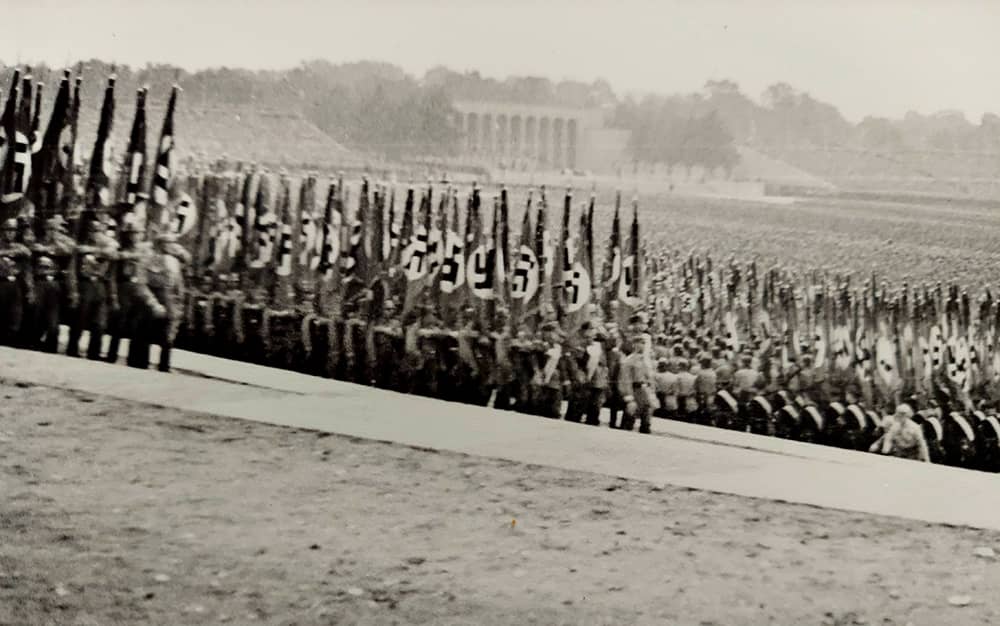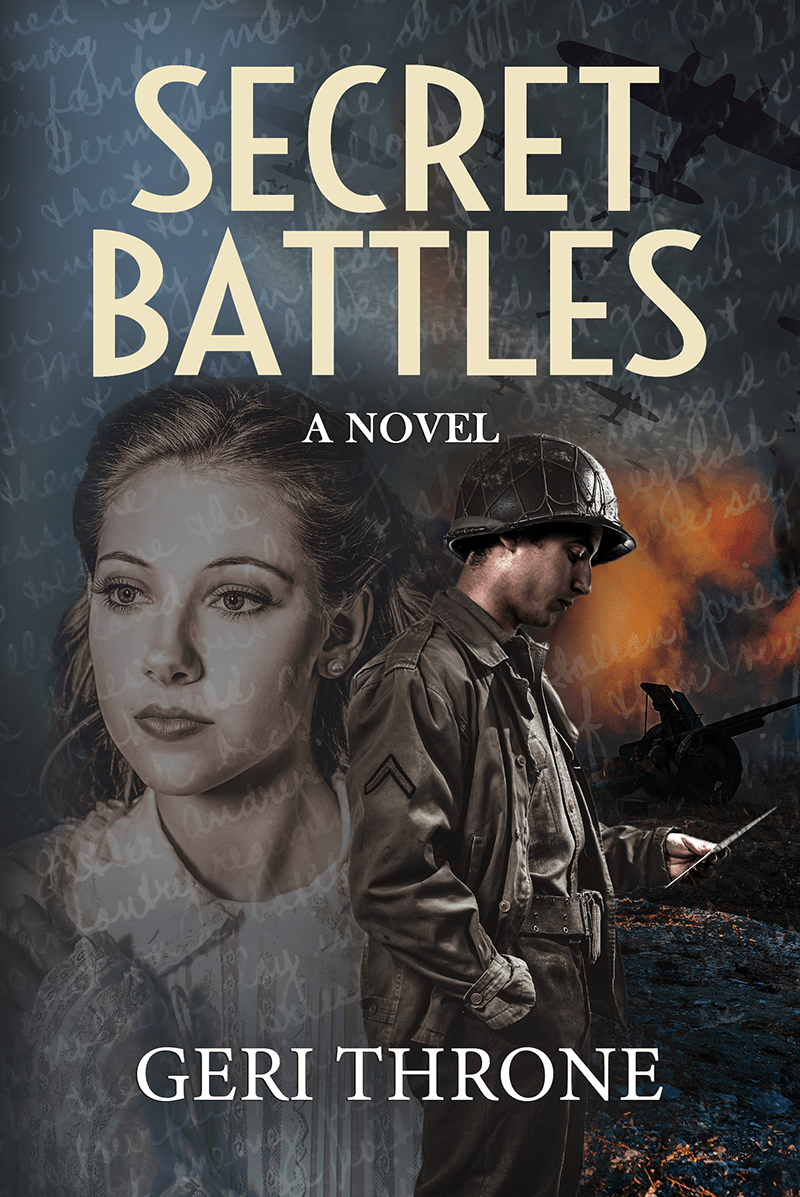
My husband and I lived near Nuremberg, Germany, while he was an Army lieutenant stationed in Bavaria. Though we both were children of World War II veterans, we knew little about the region’s history.
We felt at home in the third-floor apartment of our landlord’s house. He and his wife treated us like family; their small suburb of Muhlhof was charming; our apartment overlooked peaceful farm fields, villages and woodlands. We often visited Nuremberg’s quaint Old Town to admire its medieval buildings, cobblestone streets and ancient stone walls. We even attended midnight Christmas services one year in the historic Frauenkirche (Church of Our Lady) at the edge of the city’s famed market square.
A visit from my parents gave me a different perspective. My father, whose wartime experience inspired my novel, wanted to show us an area near Nuremberg’s Old Town. He took us to a massive empty field with an imposing grandstand at one end. The structure looked untended and deserted. Stubborn weeds pushing through cracks in its limestone-covered concrete. We were the only visitors that afternoon.
We climbed steps to a podium at the grandstand’s center. “Hitler stood right here when he gave his speeches,” my father said. He gestured toward the vast empty space before us. “That field would be filled with his soldiers and supporters.”
As I stood on the spot where Hitler himself stood, I shivered at the thought of thousands of flag-waving, spellbound soldiers in Nazi uniforms jammed before him, roaring approval. I later learned that the grounds were big enough to hold twelve soccer fields, big enough for 200,000 people. Thousands more spectators would sit in since-destroyed smaller grandstands that surrounded the field.
The photograph accompanying this post gives only a hint of the enormity of the spectacle. It shows long lines of uniformed Nazis marching onto the grounds. Blurred in the distance are a sea of more soldiers. (I’ll talk about the source of this photo in my next blog post.)
Nuremberg was the perfect spot for the Nazi party to hold those annual pre-war propaganda extravaganzas. A broad base of party members lived in the region, the city had a well-organized party branch, and its police chief was a strong Nazi supporter. In 1933, Hitler declared Nuremberg the “City of Nazi Party Rallies.” The rallies weren’t intended to espouse a particular political viewpoint. Their purpose was pure propaganda: To appeal to people’s emotions, to trumpet the cult of Adolf Hitler, and to build enthusiasm for war.
Each year, from 1933 until 1938, the rallies glorified the Hitler as the heroic and infallible Fuhrer. Hitler used the events as opportunities to demonize his enemies, Jews and Communism. At the 1935 rally, he ordered new laws that revoked citizenship for all Jews.
Each rally was given its own title. Ironically, the rally planned for 1939 was to be called “Rally of Peace.” It had to be cancelled because Germany was about to invade Poland, an action that would ignite World War II.
During the war, the rallies ceased. Instead, the grounds were used to hold more than 150,000 prisoners of war and civilian forced laborers.
Given that history, it should come as no surprise that a few weeks before the Nazis formally surrendered in 1945, the U.S. Army’s Third Division celebrated its certain victory on the rally grounds. A large American flag was draped over the massive, marble swastika that topped the grandstand. The division marched onto the field to watch five soldiers be awarded the Medal of Honor for their valor.
Three days later, Army engineers placed demolition charges around the swastika and dramatically blew it to pieces.
In the decades since, the rally grounds—once center stage for the Nazis’ grotesque propaganda machine—have served mundane purposes. The place where a megalomaniac once whipped up the adulation of frenzied crowds became the site of American football practices and games, car races, pop concerts and heavy metal bands.
In 2019, in a much-debated decision, the city of Nuremberg announced it would spend tens of millions of euros to repair the crumbling grandstand and maintain the grounds. The site needed to be saved for educational purposes, city leaders said.
They stressed that the investment was to conserve—not restore or rebuild—the site.

Very interesting and so well written. Thank you for teaching me about this experience you had.